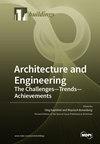Optimizing Seismic Performance of Tuned Mass Dampers at Various Levels in Reinforced Concrete Buildings
IF 3.1
3区 工程技术
Q2 CONSTRUCTION & BUILDING TECHNOLOGY
引用次数: 0
Abstract
This study aimed to rigorously evaluate the impact of tuned mass dampers (TMDs) on structural response under seismic excitation. By strategically placing TMDs at various levels within the structures, the research sought to determine their effectiveness in mitigating structural movement. A single-degree-of-freedom (SDOF) system incorporating TMDs was utilized to model structures of 10, 13, and 16 stories, each configured with TMDs at different heights. The structures were subjected to near-fault earthquakes to assess the efficacy of TMDs in reducing structural response. The findings revealed significant enhancements in structural performance when TMDs were optimally positioned. Specifically, a 50% reduction in both acceleration and displacement, alongside a 65% decrease in maximum drift, underscored the effectiveness of TMD deployment. Furthermore, the study demonstrated that distributing multiple TMDs along the height of the structure provided superior drift control. Notably, positioning TMDs within the upper one-third of the structure yielded the most pronounced improvements in acceleration, displacement, and maximum drift. Finally, the research indicates that the strategic incorporation of TMDs can significantly enhance the seismic resilience of structures. The results highlight the substantial benefits of TMDs in optimizing acceleration, displacement, and drift, thereby affirming their critical role in seismic design and retrofitting strategies.优化钢筋混凝土建筑中各级调谐质量阻尼器的抗震性能
本研究旨在严格评估调谐质量阻尼器 (TMD) 在地震激励下对结构响应的影响。通过在结构的不同层面战略性地放置 TMD,该研究试图确定它们在减轻结构运动方面的有效性。研究人员利用一个包含 TMD 的单自由度(SDOF)系统对 10 层、13 层和 16 层的结构进行建模,每个结构都在不同高度配置了 TMD。这些结构经受了近断层地震的考验,以评估 TMD 在降低结构响应方面的功效。研究结果表明,当 TMD 处于最佳位置时,结构性能会得到明显改善。具体而言,加速度和位移均降低了 50%,最大漂移降低了 65%,这突出表明了 TMD 部署的有效性。此外,研究还表明,沿结构高度分布多个 TMD 可提供出色的漂移控制。值得注意的是,将 TMD 布置在结构的上三分之一处,对加速度、位移和最大漂移的改善最为明显。最后,研究表明,战略性地采用 TMD 可以显著提高结构的抗震能力。研究结果凸显了 TMD 在优化加速度、位移和漂移方面的巨大优势,从而肯定了其在抗震设计和改造战略中的关键作用。
本文章由计算机程序翻译,如有差异,请以英文原文为准。
求助全文
约1分钟内获得全文
求助全文
来源期刊

Buildings
Multiple-
CiteScore
3.40
自引率
26.30%
发文量
1883
审稿时长
11 weeks
期刊介绍:
BUILDINGS content is primarily staff-written and submitted information is evaluated by the editors for its value to the audience. Such information may be used in articles with appropriate attribution to the source. The editorial staff considers information on the following topics: -Issues directed at building owners and facility managers in North America -Issues relevant to existing buildings, including retrofits, maintenance and modernization -Solution-based content, such as tips and tricks -New construction but only with an eye to issues involving maintenance and operation We generally do not review the following topics because these are not relevant to our readers: -Information on the residential market with the exception of multifamily buildings -International news unrelated to the North American market -Real estate market updates or construction updates
 求助内容:
求助内容: 应助结果提醒方式:
应助结果提醒方式:


